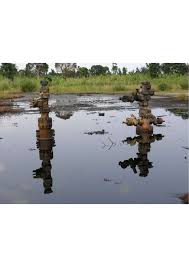… Bayelsa, Delta, Rivers, Ogun among Flood-prone states With Low Shares
… Over 1,200 communities, 107 LGs Placed On High Flood Alert
…Citizens Lament Displacement, Disease Outbreaks, Loss Of Livelihood
Despite receiving a staggering ₦22.9 billion as ecological funds in just five months of 2025, Nigerian states are still grappling with worsening flood threats that have already displaced millions and destroyed livelihoods across the country.
Data released by the National Bureau of Statistics (NBS) shows that between January and May 2025, states collectively got ₦22.90bn from the federation account allocation committee (FAAC) under the ecological fund—designed to mitigate environmental challenges such as erosion, desertification, flooding, oil spills, and drought.
The allocation breakdown reveals that Kano received the highest share at ₦1.29bn, followed by Lagos (₦1.08bn), and Borno (₦1.01bn). Others include Katsina (₦997m), Bauchi (₦970m), and Oyo (₦909m). At the lower rung, Bayelsa—a high flood risk state—received just ₦358.8m, the least among the 36 states.
Across geopolitical zones, the north-west cornered the highest allocation with ₦5.85bn, followed by the south-west (₦4.59bn) and north-east (₦4.36bn). The south-south, home to flood-prone oil-producing states, got the least share—₦2.40bn.
Yet, despite these billions, the Nigeria Hydrological Services Agency (NiHSA) has warned of imminent flooding in 107 local government areas across 29 states and the FCT between September 1 and 15, 2025.
The agency listed over 631 communities and more than 50 critical infrastructure points—including major highways and bridges—at risk. It warned of river overbanking, flash floods, localised inundation, water contamination, and disease outbreaks.
In 2024 alone, floods claimed 321 lives, displaced over 740,000 Nigerians, and affected more than 1.37 million people. Experts fear 2025 could be worse if states fail to deploy their ecological allocations effectively.
While Kano and Lagos received over a billion each, flood-prone states like Bayelsa, Rivers, and Ogun received less than half that figure. Critics argue this funding imbalance, combined with poor accountability, exposes Nigeria’s vulnerability to climate change disasters.
NiHSA’s Director-General, Umar Mohammed, urged governments to activate emergency response plans, evacuation routes, and relief materials, warning that the coming weeks could be decisive for millions living in low-lying and riverine areas.
For residents, however, the numbers mean little. Many continue to lose homes, farms, and livelihoods to floods—despite the billions supposedly spent to protect them.
The National Bureau of Statistics (NBS) says the 36 states received N22.90 billion as ecological fund from the federation account allocation committee (FAAC) between January and May 2025.
The ecological fund is a component of Nigeria’s federal revenue allocation designed to tackle environmental challenges such as erosion, desertification, flooding, oil spills, and drought.
It is managed by the ecological fund office under the office of the secretary to the government of the federation.
In April, the Nigeria Hydrological Services Agency (NIHSA) warned that 1,249 communities in 30 states and the federal capital territory (FCT) face high flood risk this year.
Do you want to share a story with us? Do you want to advertise with us? Do you need publicity for a product, service, or event? Contact us on WhatsApp +2348183319097 Email: platformtimes@gmail.com
We are committed to impactful investigative journalism for human interest and social justice. Your donation will help us tell more stories. Kindly donate any amount HERE




